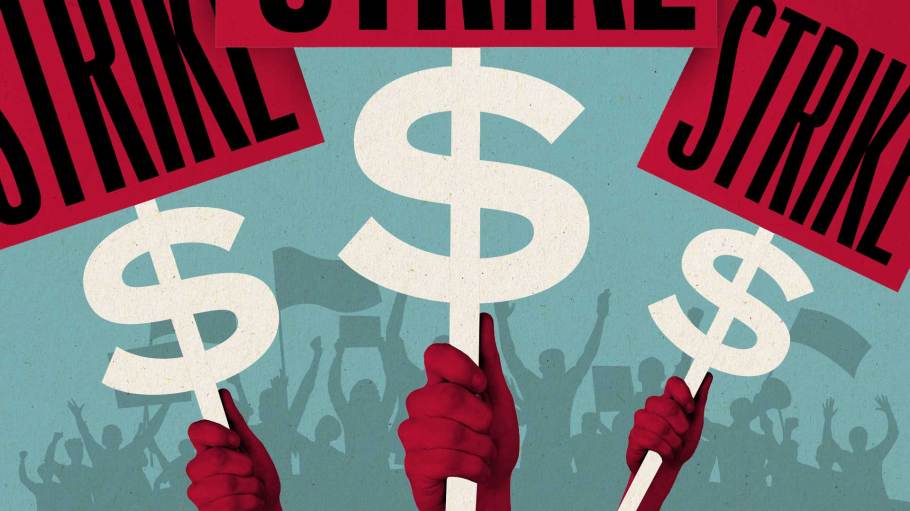Were Hollywood’s Strikes Really a $6 Billion Loss? More Like $1.4 Billion, Says One Economist
In this article
The conventional wisdom isn’t quite unanimous on just how financially damaging the strikes were that paralyzed the entertainment industry in 2023.
Earlier this week, the UCLA Anderson Forecast, which has been reporting an economic outlook on the country and the state of California on a regular basis since 1952, offered a projection, based on preliminary data, that the strikes will generate a loss as low as $1.4 billion. “The impact on both the Los Angeles and California economies was quite small in the aggregate, even as it was individually large and difficult for some,” a statement accompanying the findings reads.
These figures are a dramatic outlier from the often quoted $3 billion–$6 billion range, attributed to the Milken Institute, that has been cited since the conclusion of the dual walkouts last year.
The smaller estimates, derived from Jerry Nickelsburg, the UCLA economist who authored the forecast, are said to be a more accurate reflection when considering the film and TV industry’s restructuring of the past several years, which has resulted in more consolidation, a decreasing output of content and downward trends that predate the strikes.
In a presentation on the report this week (see video above), Nickelsburg notes how the 2007-08 writers strike led to studios and production companies stockpiling content in anticipation. In other words, the content that would have been produced or released during the strike still happened, just within a different time frame.
In contrast, downward trending data in 2023, including industry employment and the number of shooting days, show there was significantly less stockpiling this time around due to the industry already scaling back their output following the post-pandemic spike.
Comparing Hollywood’s 2023 performance to 2022, a year that saw a surge in content following the lull of the pandemic years, therefore leads to inflated numbers. Using the pre-COVID years as a base, meanwhile, also isn’t accurate, given how much the industry has changed with the rise of streaming and AI.
With those external factors in mind, Nickelsburg believes that we can find a more accurate economic assessment by comparing what happened in 2023 with what could have happened if the pre-strike trends continued uninterrupted. Until we see the industry’s performance this and next year, Nickelsburg thinks his results most accurately reflect the strikes’ direct impact on Hollywood.
“In a year we’ll give you an update, but it’s too early really to tell,” he said during the UCLA Anderson presentation. “But what is clear is the economic impact is much less than what was being quoted in the newspapers.”
The report stresses that these findings are all speculative. In reality, Nickelsburg notes, it’s simply too early to definitively know the strikes’ toll on Hollywood. If the industry sees a surge in employment and revenue over the next couple of years, then he concedes he will have underestimated the impact. If the downward trends continue as they had before the strikes, however, the strikes’ impact was likely minimal.
Nickelsburg also had a conservative take back during the 2007-08 writers strike, then predicting a $380 million industry loss compared with the $1 billion-plus more commonly cited at the time. Reports published after the strike found the total impact was above $2 billion.

